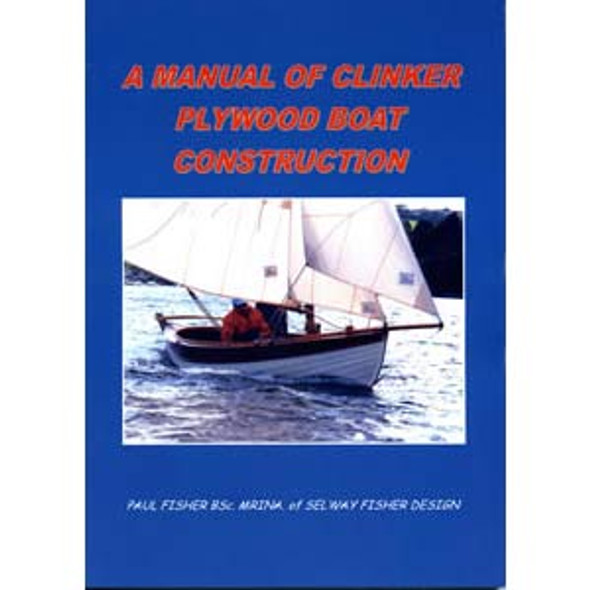Description
Includes sailing canoe details
Ply/Epoxy and stitch and tape construction is fun because, with little financial outlay, you can be on the water very quickly in a boat that you have created yourself over a period of only 25 hours or so, using basic domestic facilities. Apart from detailing these construction methods, the manual also includes chapters on Basic Tool Requirements, Jointing Methods for Chines and Long Planks, Low Cost Materials and Paddle Design and Construction. Also included is a chapter on CONVERTING YOUR OWN CANOE TO SAIL with details of RUDDER and LEEBOARD requirements and HOW TO MAKE YOUR OWN SIMPLE SAILS.
This new version of the manual now includes details of canoe 'bits and pieces' - canoe trolleys, outboard brackets and wells, making a canoe in 2 halves, a sculling rig, floats and sponsons and various different rudders.



Contents
IntroductionâThe Modern Method of Ply Canoe Construction
Chapter 1
Tools, Skills & the Workshop
1.1 The Work Area
1.2 Tools
1.3 Skills
Chapter 2
Material for Stitch & Tape Construction
2.1 Wood
2.1.1 Plywood
2.1.2 Timber (Softwoods)
2.1.3 Timber (Hardwoods)
2.2 Glues & Fastenings
2.3 Developments in Epoxies
2.4 Possible Problems with Epoxies
2.4.1 The Epoxy Will Not Cure
2.4.2 Failure in the Bond of Components being Glued Together
2.4.3 Cloudy Appearance in Epoxy Coatings
2.4.4 Runs in the Epoxy Coating
2.4.5 Other Coating Products will not Cure over Epoxy
2.4.6 Typical Material Requirements for an Average 16' (4.9m) Canoe
Chapter 3
Producing the Hull Planks
3.1 Marking Out the Hull Planks
3.2 Cutting Out the Hull Planks
Chapter 4
Joining Long Planks Together
4.1 General
4.1.1 Butt Straps
4.1.2 Scarf Joining Planks
4.1.3 Saw Tooth or Castellated Join
Chapter 5
Stitching the Planks Together
5.1 Preparing the Planks for Stitching
5.2 Stitching the Planks
5.3 Stitching the Transom in Place (Outboard Motor Canoes)
5.4 Final Tightening of the Stitches
Chapter 6
Checking the Shape of the Canoe
6.1 Checking the Shape of the Canoe
6.2 Correcting the Shape of the Canoe
Chapter 7
Stitch and Tape Seams & Epoxy Filleting Frames etc in Place
7.1 General
7.2 Stitch & Tape using Polyester Resin
7.3 Stitch & Tape using Epoxy Resin
7.4 Omitting the Tapes on the Outside of the Chine Seams
7.5 Eliminating Tape Bumps on the Outside of the Chine Seam
7.6 Bonding Plywood Frames to the Hull
7.7 General Notes on Epoxy & Bonding with Epoxy
Chapter 8
Fitting Out the Hull
8.1 General
8.2 The Gunwales
8.3 The Breast Hook or Deck
8.4 The Stretcher/Yoke
8.5 Seats/Thwarts
Chapter 9
Painting & Finishing (incl. Sheathing the Hull)
9.1 Painting & Varnishing
9.2 Sheathing the Hull
Chapter 10
Paddles
10.1 General
10.2.1 The Double Paddle
10.2.2 Blade Design for the Double Paddle
10.2.3 Feathering
10.3 The Single (Canadian) Canoe Paddle
10.4 Making Your Own Paddle
Chapter 11
Sailing Rigs & Gear for Canoes 59
11.1 General
11.2 The Rudder
11.2.1 The Hinged Rudder
11.3 The Keel
11.3.1 The Leeboard
11.3.2 The Daggerboard
11.4 The Balance between Rig & Hull
11.5 The Sails & Spars
11.5.1 The Mast Support (Step)
11.5.2 Suitable Rigs
Chapter 12
Canoe Equipment
12.1 Rudders
12.1.1 Kayak Rudders
12.1.2 More Open Canoe Rudders
12.2 Making the Canoe in Two Halves
12.3 Sponsons
12.4 Floats
12.5 Outboard Brackets & Wells
12.6 Yokes & Stretchers
12.7 Chair/Seat Backs and Bottoms
12.8 Sculling/Rowing Outriggers
12.9 Canoe Trolleys
Chapter 13
Appendices
13.1 Cutting Scarf Joins






